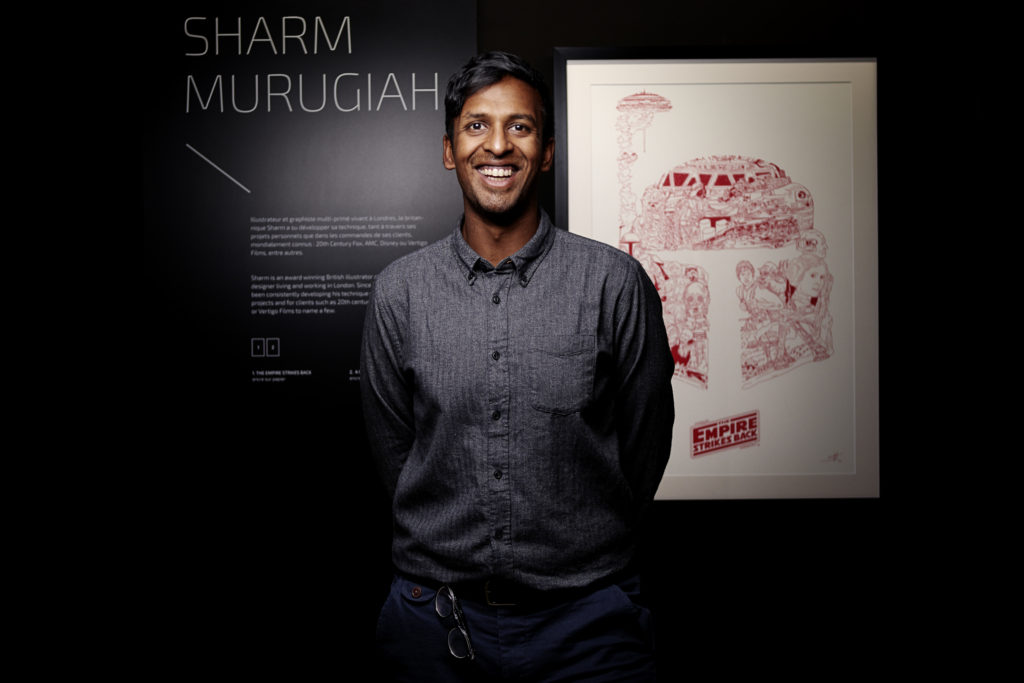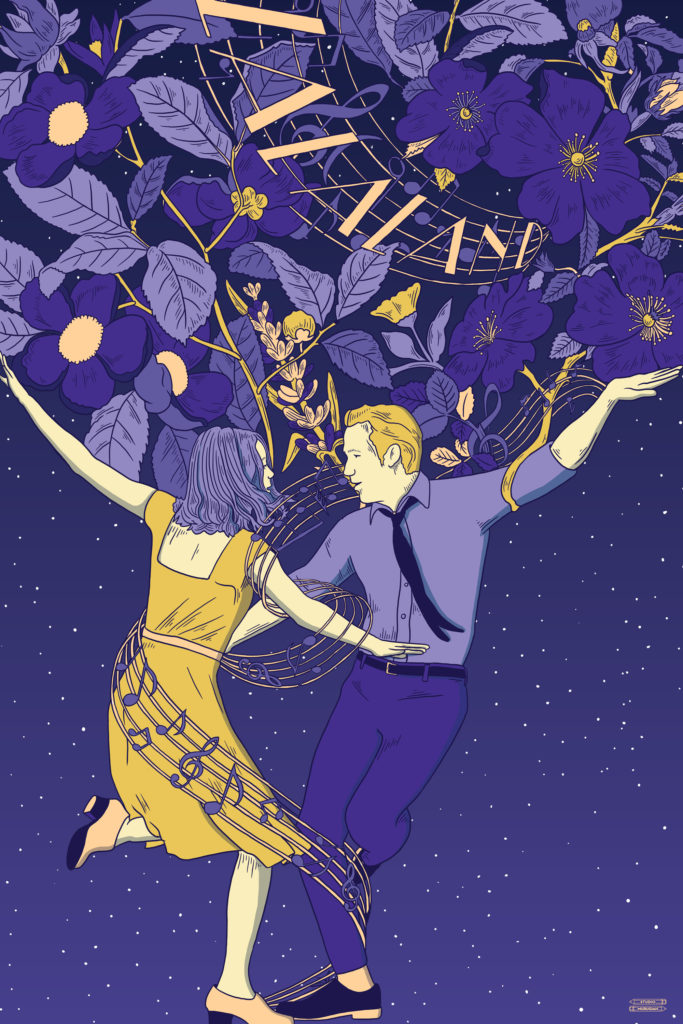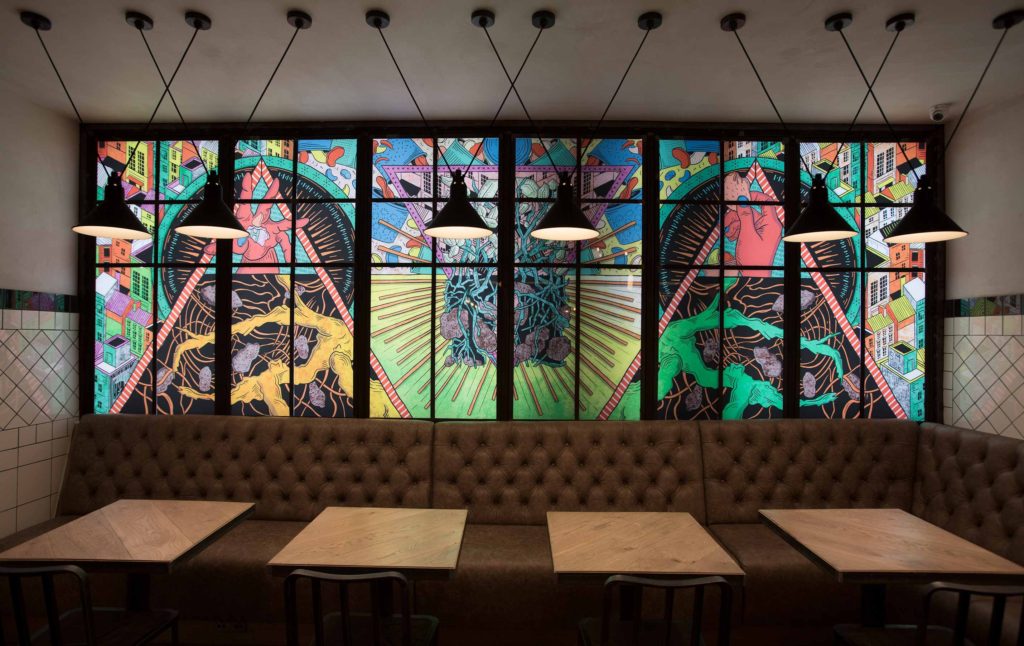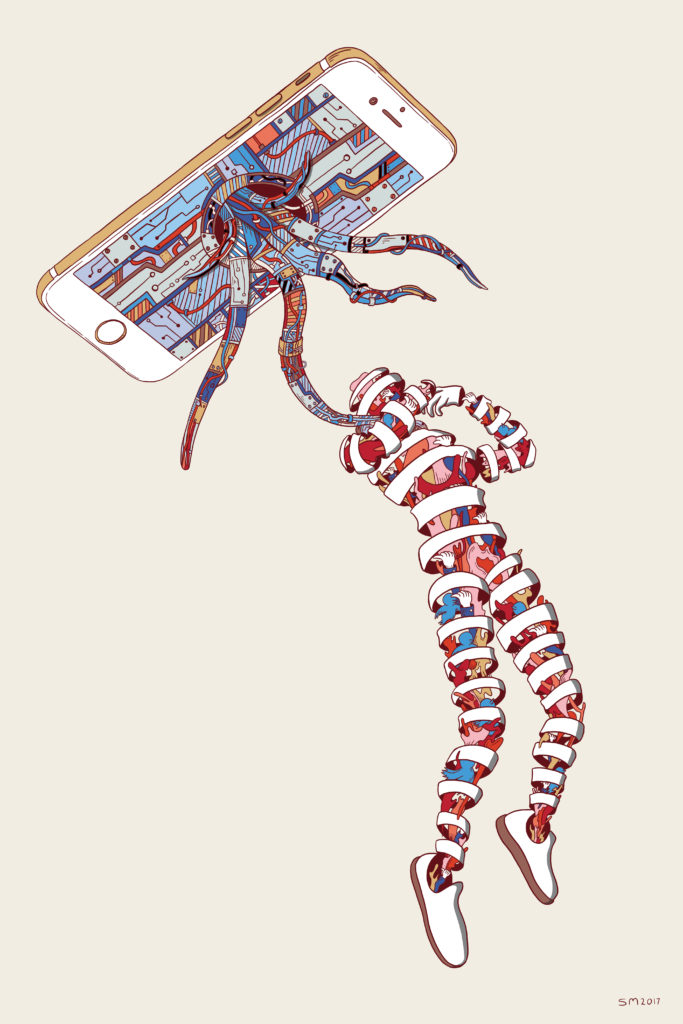We talked with Sharm Murugiah about his artistic journey and how he balances his freelance career with mindfulness. He showed us that mindfulness — the ability to be fully present and aware of where we are and what we’re doing -— can be a powerful influence in your art.
STUDIO MURUGIAH AKA Sharm Murugiah is a commercial artist living and working in London. Born in Birmingham, raised in the valleys of South Wales, and originally of Sri Lankan descent, Sharm has many influences in his work, but identifies himself with the ways of the force.

Maker Spotlight: STUDIO MURUGIAH AKA Sharm Murugiah
How did you get into drawing?
I started drawing at a very young age, but was very influenced by films like Terminator 2, Jurassic Park, Aladdin, The Lion King — the films of the 90s. I spent all of my spare time drawing film characters. Pop culture essentially drove my passion for the art.
In high school, my art teacher said, “Why don’t you pursue this as a career? You’d be really good at it.” But I’m the son of Sri Lankan born parents —hardworking people who came from nothing to be medical professionals. When I told them I wanted to be an artist, they both said, “We appreciate that you’re into creativity, but you need to do something that has a regular income so you can support yourself.”
My art teacher suggested architecture, so I went to university and studied for a full seven-year course in architecture. But after working in architecture for awhile, I decided to quit. I had saved enough money to coast for a year while I was figuring things out.
How did your parents react?
It was a really big deal because I had spent so many years dedicated to studying architecture. But I was having serious health problems from the stress of the industry. Even my parents could see that the stress was physically manifesting in me — I actually got stress-induced alopecia. So, they told me to do what was best for myself.
What was it like starting a new career?
Initially, I got a job at a greeting card company, and I worked on my own projects on the side. I really just focused on things that I enjoyed doing, which at the time was alternative movie posters and alternative film-related art. I worked on a project where I re-envisioned the book covers for Quentin Tarantino’s screenplays. Those got covered by a publication in the UK, and from that, I was able to get my first illustration job.
Can you tell us a little bit about your process?
My process starts by sending the client some rough drawings. In my case, my rough drawings normally end up being nearly finished because I’m a bit of a “neat freak.” The way I draw is the same way that I tidy up: I’ll sketch some concepts on paper, but I go digital very early on. I’ll mock up a photo montage to get my head around the concept, then start to draw based on those photographs.
The most recent cover design I did was for Print Week Magazine, and the only requirement was that they wanted it to be a celebration image — people celebrating a hundred years of print. That was the only direction I was given. So I decided to set it in a crowd scenario because I enjoy drawing lots of people and characters. Then, I started to introduce small creatures and fun monsters in the background. I tend to subtly add things here and there, just to see what I can get away with.
Was it easy to integrate Astropad into your workflow?
I love using Astropad. I even bought an iPad Pro with Astropad in mind. It’s kind of revolutionized everything because I can see what I’m looking at, and if I get tired of the seating in my office, I can go sit on the sofa and watch a movie and work wirelessly. After I switched to the iPad Pro, my old Wacom tablet became just another thing on my bookshelf. I eventually gave it to a friend who was interested in getting into digital art as a hobby.
Was it awkward at first to draw on an iPad?
It was never awkward, purely because before using digital tools to draw, I was drawing on pencils and paper. Drawing on an iPad felt like returning to pencil and paper again, which was great.
What’s influencing you these days?
For the past five or six years, I was really interested in alternative movie art. But that market has become more saturated, so now I’ve been spending more time looking at fine art. I go back in history and look at art movements and the people they were influenced by. Here in London, I have access to some of the finest art in the world, as our public art galleries are all free! So I try to find a way to bring that into my own work.
Within pop culture, I’ve moved away from movies and towards comics. Daniel Clowes, who wrote Ghost World, is a big inspiration for me. I enjoy the way he draws people in mundane situations with poppy color palettes. I also admire Francis Bacon. He was a very tormented artist — a gay man struggling in the 80s — painting the dark, surreal side of his subjects.
What are you doing when you’re not working or going to galleries?
My hobby was always drawing. Even when I was an architect, I was always drawing. But now that hobby has become my job, I’ve started to become much more mindful of human interactions: friendships, relationships, family. Ultimately, your work is nothing compared to having meaningful interactions with people.
But that realization has only come recently, in the last year or so. Now, I’ll go down to the local comic book store and have a conversation with the comic book guy. Or just talk to people in the street. When my girlfriend comes home from work, everything switches off and I’m with her. I try to take a step back and remind myself that this is what it’s all about.
How has this realization influenced your work?
Human interactions really inform the work you do. It clears your mind and helps you think of new ideas for work. Products, physical items, materialistic things: what do they actually mean to us? Previous generations were very focused on buying a house, getting a 9-to-5 job, supporting families. Now the millennials are more interested in pursuing a different kind of happiness.
Being in the moment is one of the most difficult things to grasp. I wish I had grasped that earlier on, maybe ten years ago, when I first started my architecture education. So these days, I’ve started to focus my recent projects on social commentary, addiction to technology and that kind of thing.
You can read more about mindfulness here.
See more of Sharma / Studio Murugiah’s work at his website, and on his social media:
- Instagram: @studio_murugiah
- Twitter: @StudioMurugiah
- Facebook: Studio Murugiah
Share your Astropad workflow with us on social using #Astropad for a chance to be featured.











